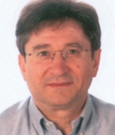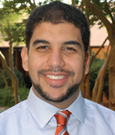The Journal of Vascular and Interventional Radiology, the Society of Interventional Radiology’s (SIR) peer-reviewed scientific journal, together with SIR Foundation, recently presented a number of awards at SIR’s 39th Annual Scientific Meeting in San Diego.
Clinical Research
Eliseo Vano, PhD, an adviser to the Spanish Ministry of Health for Radiation Protection in Medical Exposures, received the journal’s Editor’s Award for Outstanding Clinical Research Paper for “Radiation-associated Lens Opacities in Catheterization Personnel: Results of a Survey and Direct Assessments.” Dr. Vano, who has for the last 20 years led a research team funded by Spanish organizations and the European Commission focused on radiation protection in medical imaging and interventional radiology, is Professor of Medical Physics on the Faculty of Medicine of the Complutense University of Madrid and Head of the Medical Physics Service at Madrid’s San Carlos University Hospital. He is also a consultant to the International Atomic Energy Agency for topics concerning radiation safety in diagnostic and interventional radiology.
Laboratory Investigation
Marwan Moussa, MD, of the University of Arkansas Medical School’s (UAMS) Department of Radiology, received the journal’s Editor’s Award for Outstanding Laboratory Investigation for “Adjuvant Liposomal Doxorubicin Markedly Affects Radiofrequency Ablation-induced Effects on Periablational Microvasculature.” Before joining UAMS, Dr. Moussa spent 3 years working at the minimally invasive tumor therapy laboratory at Harvard’s Beth Israel Hospital in Boston, where he authored and coauthored several original articles and eight abstracts in the areas of combination radiofrequency ablation therapies and irreversible electroporation.
“The Journal of Vascular and Interventional Radiology prides itself on bringing high-level, evidence-based research to the fore,” said Ziv J. Haskal, MD, FSIR, Editor-in-Chief. “Dr. Vano’s article is an important one for radiology professionals; it is an in-depth demonstration of radiation eye injury risks to interventional personnel at occupational levels. Dr. Moussa’s paper examines chemotherapy delivery and its effects on surrounding tissue during radiofrequency ablation. Enhancing the effect of both of these potent image-guided therapies may allow us to more completely treat liver tumors,” said Dr. Haskal, a Professor with the Department of Radiology and Medical Imaging at the University of Virginia Health System in Charlottesville. ■




